Highlights
Z
Highlights
Z
https://www.zdergisi.istanbul/makale/highlights-686
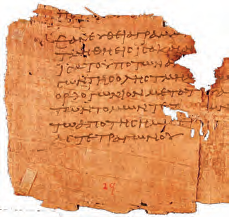 Clay, papyrus, parchment.. the history of paper
Clay, papyrus, parchment.. the history of paper
EMRE DÖLEN
The discovery of writing had rendered surface materials indispensable. A variety of materials were put to use across times and places such as bones, tree bark or silk cloth, but clay tablets, papyrus and parchment gained prevalence, leading ultimately to the discovery of paper.

Main forms of the ancient book: the roll and the codex
HORST BLANCK
The roll and the codex were the two prevailing forms of books in Greek and Roman Antiquity. The roll, much older in history than the codex, was the only known form of book for centuries. Due to the lack of reliable information, the time of transfer of the roll from its place of origin, Egypt, to Greece, is not known. The term “codex” in the Latin and “somatikon” in the Greek languages of late Antiquity used to designate the book in its form that is still used today.
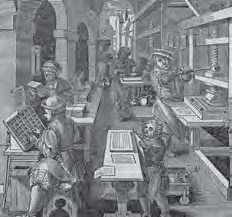 From manuscript to printed
From manuscript to printed
EMRE DÖLEN
The emergence and development of printing techniques took place during roughly the second half of the 15th century and their spread, throughout the 16th. Printing by means of movable types had already been experimented in different cities of Europe independently from each other by mid-16th century. But mass printing in the real sense is admitted to have started with Johann Gutenberg’s (1400-1468) producing the 42-line Bible in his workshop in Mainz, Germany in 1455. Printing techniques evolved fast afterwards, spreading from Germany all over Europe.
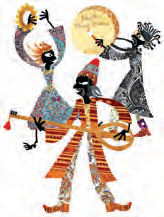 Ex-libris, the libraries’ record of ownership
Ex-libris, the libraries’ record of ownership
HASİP BEKTAŞ
The ex-libris is an important source of information. It was conceived to meet a need but later acquired the quality of a work of art with aesthetical appeal. It is art attached to a book with its warm feel in the reader’s hands. Due to the long past of this medium of art, each specimen reflects the cultural and historical features of its time. It also draws interest as such and is therefore used as a collector’s item and an antiquarian’s object.
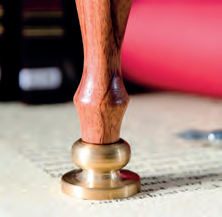 Library stamps
Library stamps
YUSUF TURAN GÜNAYDIN
Library stamps we see in any library, public or private, give us clues about the experience of each book before it arrived in that library. We can see a large variety of interesting stamps in any library of Turkey. This article glimpses at stamps selected from Beyazıt State Library and the Library of the Turkish History Institution.
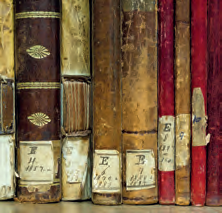 The arrangement of books on shelves
The arrangement of books on shelves
Books and other materials contained in any library have to be systematically arranged on shelves. There are data classification systems in use in world’s libraries some of which are widespread and have been adopted as standards, such as the “Dewey Dec-imal Classification”, the “Universal Decimal Classification”, and the “Library of Con-gress Classification, among others.
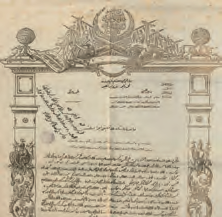 The archive of the Turkish History Institute
The archive of the Turkish History Institute
SEMİHA NURDAN
The Turkish History Institute is remarkably rich with respect to archive and documentation. The documents contained in the Institute’s archive consist in their majority of letters, reports, notebooks, personal files and personal archive collections. The entire archive is open to the access of researchers.
 Book conservation
Book conservation
Books are diffusers of well-being in the form of science and knowledge, but they them-selves need to be safeguarded. The Conservation and Restoration Centre established within the Zeytinburnu Kazlıçeşme Cultural Centre under the initiative of Asitane Waqf meets this need. This book hospital applies restoration and preservation methods tai-lored to the specific features of each book, taking into consideration their materials, techniques of production and causes of physical deterioration.
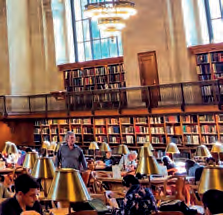 Library ethics
Library ethics
Any library that is open to the public indispensably has to enforce rules of ethics. Those rules must be observed by anyone who comes in. The first such rule must certainly be, silence. No talks should be exchanged in the public spaces of the library, and one should not even talk by himself/herself. It would not be an exaggeration to say that one should not talk even to warn others to keep silent. There, everybody is busy and should not be distracted.
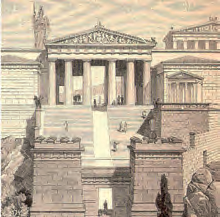 The early libraries of the East
The early libraries of the East
NURAY YILDIZ
In ancient East, the terms “archive” and “library” were used interchangeably. While the archive consists of collections of documents and official papers, the library contains products of intellectual activity. After the settlement of populations around Euphrates, Tigris and the Nile, increased needs for communications between urban centers led to the invention of pictographic writing. Archives and libraries came into being as a natural consequence of the proliferation of written materials. This article looks into the Ancient Egyptian, Sumerian, Assyrian and Hittitee archives.
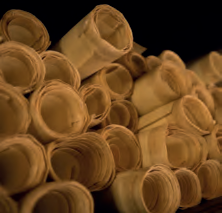 The library in antiquity
The library in antiquity
HORST BLANCK
According to sources from Greek Antiquity, the first person to establish a public library in that period was the Athenian tyrant Peisistratos. The library was later enlarged by Athenians, then taken away by the Persian King Xerxes when he invaded Greece in 480 BC, and restored 300 years later by King Seleukos Nikanor. Its collections must have included the writings of Homeros and Hesiodos, works of Ionian philosophers, and lyric literature which had evolved at the time. In that period, libraries were not more than rooms where the works were stored and borrowed when needed.
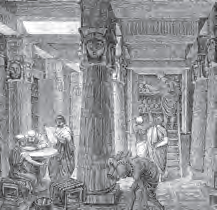 The Arab destruction of the Library of Alexandria: anatomy of a myth
The Arab destruction of the Library of Alexandria: anatomy of a myth
BERNARD LEWIS
Despite the existence of a lot of evidence to the contrary, some writers still maintain that the Li-brary of Alexandria was destroyed by the Arabs under the orders of Caliph Omar following the conquest of the city in 642. This story - its roots, aims, recognition and refutation of it - is an inter-esting example of how myths emerge and remain in effect though temporarily. On the other hand, those who found it unlikely and rejected it, thus liberating Caliph Omar and his companions from this accusation, were European Orientalists.
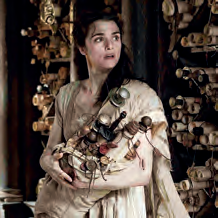 Libraries in Europe from antiquity to the middle ages
Libraries in Europe from antiquity to the middle ages
M. TACEDDİN KUTAY
Europe has experienced constant social and political evolutions since Antiquity. Politi-cal regimes were changing, as were social structures. These changes are reflected in the libraries and the outlook toward them in different periods. When seen from the viewpoint of the meaning attributed to them by political authorities in addition to their practical functions, libraries acquire importance as indicators of the social and political features of their times.
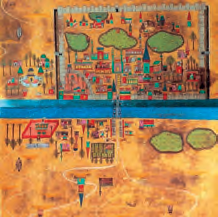 A treasury of humanity: Bayt al-Hikmah
A treasury of humanity: Bayt al-Hikmah
MUSTAFA DEMIRCI
One of the landmark developments in the history of culture was the Abbasis’ assembling written works inherited from earlier faiths, cultures and civilizations and thus forming a most valuable library of manuscripts. The Abbasid state emerged in history in the year 750 and crowned its capital, Baghdad, with this unique library. This is the story of the library that preserved the written heritage of Antiquity; the story of Bayt al-Hikmah.
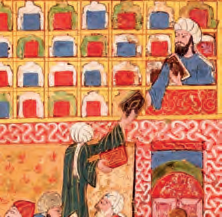 Dar al-Hikmah: A multipurpose library
Dar al-Hikmah: A multipurpose library
ADNAN DEMİRCAN
Dar al-Hikmah established in 1004, during the reign of Hakem Bi amr- Allah (996-1021), represented the importance Fatimids gave to science and culture. It had a large library well-known for its rich holdings, containing books written by Smaili scholars together with all kinds of books written in the Islamic world. The library, remarkable in its early years for its diversity, gradually shifted the weight of its collection towards subjects of interest to the Shiite / Smaili sect.
 Andalusia libraries
Andalusia libraries
LÜTFİ ŞEYBAN
Omayyad Andalusian Caliph Hakem II’s interest in sciences resulted in the establishment, in the Cordoba Palace, of one of the largest libraries of the medieval period. Hakem collected in this palace valuable books relating to all branches of sciences and brought from various countries. The total number of holdings of his library varied between 400 - 600 thousand. It is mentioned in some sources that it had taken six months to relocate the library from one place to another.
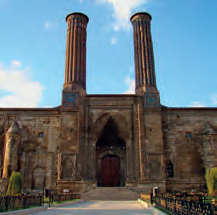 Seljuks’ libraries
Seljuks’ libraries
HAŞIM ŞAHIN
As in the Umayyad and the Abbasid periods, in the Seljuks’ period as well there existed institutional libraries as part of mosques, medreses, hospitals, etc. together with private libraries founded by persons. During the period of the Turkish Seljuks, the city that had the largest number of libraries was Konya, their second capital chronologically after Iznik. Konya shows great similarity with Baghdad under the Great Seljuk State for its being a meeting place for scholars and the large number of its medreses and libraries, including personal libraries.
 Alamut library
Alamut library
AYŞE ATICI ARAYANCAN
Hassan Sabbah was recognized during his eventful life not only as a good leader, a politician and a strategist, but also as an intellectual and an author. Along with his sharp mind and his reformist character, his literary skills helped him advance his cause. Hasan Sabbah established a large library within the Alamut Castle, which was the Smailis’ headquarters and also their cultural and sectarian center. Practically nothing remains of the books he wrote or the library he established.
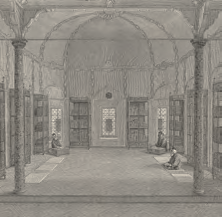 Ottoman libraries
Ottoman libraries
A. SÜHEYL ÜNVER
During our research we found out that Seljukid rulers, statesmen and scholars possessed libraries with inscription plates recording the ownership and that Seljukid medrese complexes included libraries. Similar observations can be made for Ottoman libraries. Sultans, statesmen and scholars had valuable libraries, which were well-maintained as we learn from their ownership records. They also included libraries in the medreses they established..
 The waqfs of the libraries
The waqfs of the libraries
EMİNE BETÜL ÇAKIRCA
Libraries’ purposes are closely related to the preservation of their collections. They are assigned the tasks of protecting the books and rendering them available and accessi-ble, as stated in their establishment deeds. The deed documents are valuable refer-ences that tell us about the continuity of the tradition of librarianship and book preser-vation during centuries. The interesting information they contain can be inspiring for today’s librarians as well.
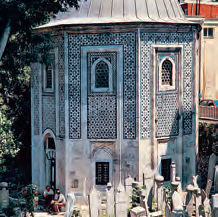 Cultural development of İstanbul after the conquest: Mahmud Pasha Library
Cultural development of İstanbul after the conquest: Mahmud Pasha Library
BERAT AÇIL
Following the conquest of İstanbul, Sultan Mehmed II assigned some leading statesmen to conduct rehabilitation of the city. One of them was Mahmud Pasha (d. 1474), a powerful figure of the time. The mosque, the public bath, the mausoleum, the school, the courthouse, the public kitchen, the library, the public fountain, the khan, the religious lodge and the surrounding shops that Mahmud Pasha founded in the district that is still named after him, were among the first architectural structures built after the conquest. The subject of this article is the Mahmud Pasha Library.
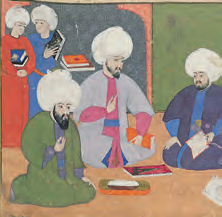 Preparing books for the Sultan’s library
Preparing books for the Sultan’s library
HİLAL KAZAN
In the Ottoman Palace, the production of books was a long and complex process. Writ-ers or specialists of various subjects from within and outside the palace used to com-pete to be commissioned books for the Sultan. One reason was, certainly, the moral and material remunerations and privileges associated with such work. The preparation process of almost all books produced in the Palace from copies of the Quran and reli-gious books to those on science, history, literature or philosophy, used to take place in the same way.
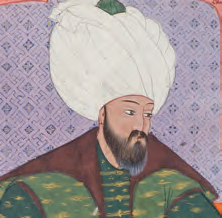 Library of Sultan Bayezid II
Library of Sultan Bayezid II
CEMAL KAFADAR
In short, this grandiose collection of books, one of the largest in its time, was growing and was intended to grow even larger. While it presented many challenges to the librarians who toiled not only on the inventory but also on acquisitions, circulation, and maintenance of the precious volumes, the labor was painstaking perhaps, but it was clearly also a labor of love. It was surely a matter of pride and prestige as well.
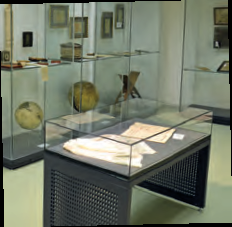 Gazihusrevbegova Library in Sarajevo
Gazihusrevbegova Library in Sarajevo
HAMZA LAVİĆ
Gazihusrevbegova Library in Sarajevo is the oldest public library in the country having served uninterruptedly since its establishment in 1537. It contains thousands of manuscripts, printed books, periodicals and documents in Arabic, Turkish, Persian, Bosnian and various other languages. Among them are 10.500 codices of manuscripts with approximately 20.000 treatises in literature, mathematics, astronomy, logic, history and Islamic scholarship.
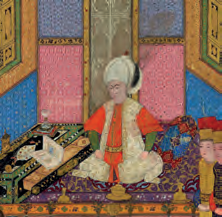 Reconstructing the library of Sultan Murad III
Reconstructing the library of Sultan Murad III
ÖZGEN FELEK
Murad III owned a rich library containing a wide range of books. He can be described as the Sultan whose name is most frequently cited when speaking of books in the 16th century. As indicated in some studies about patronage and production of books during his reign, artists of the book working for the Palace were extremely busy fulfilling the requests of the Sultan and all those who were competing to present him with books.
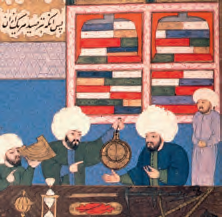 The library of an Ottoman astronomer
The library of an Ottoman astronomer
HÜSEYİN ŞEN
A famous miniature painting that depicts Taqi al-Din’s observatory established during the reign of Sultan Murad III also includes its library. Unfortunately, the painter has not drawn any detail of the library, although he meticulously drew the astronomical instruments. The only original reference to the library of the observatory is found in one Muhimme register contained in the Ottoman Archive in İstanbul. Nonetheless, some books bearing Taqi al-Din’s sign of ownership have reached our time.
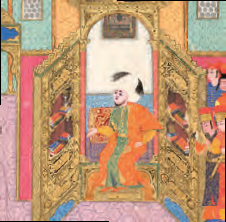 The book and libraries in the Seyahatname (Travelogue)
The book and libraries in the Seyahatname (Travelogue)
SEYİD ALİ KAHRAMAN
Evliya Çelebi recorded in his 10-volume Seyahatname (Travelogue) the information he acquired during his 51 years of travels. His travelogue is a unique source with respect to its subjects and its geographical coverage. Evliya Çelebi was deeply interested in books and used books extensively while writing on the histories of the places he visit-ed. Without mentioning any library in the present sense of the term, the Seyahatname does mention books in different contexts.
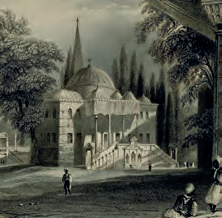 Enderun Library at Topkapı Palace
Enderun Library at Topkapı Palace
SERHAN ŞALK
Topkapı Palace was not only the center of Ottoman governance but also the living space of the Sultan, his family and the Enderun people. Books were an important component of palace life. Enderun Library was established in 1719 at the orders of Sultan Ahmed III in the Enderun place, the third place within the palace complex, by bringing together the books that had accumulated in different sections of the palace.
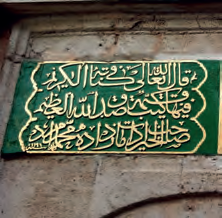 Murad Molla Library and the inscription on its building
Murad Molla Library and the inscription on its building
HATİCE AYNUR
In the Ottoman period, bookcases or book shelves were placed inside the madrasas, mosques, mausoleums or tekkes (lodges) or one of their rooms was filled with books. As far as I have been able to establish, the first library to have been built separately from the tekke it belonged to, was Murad Molla Library.
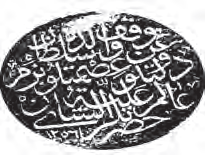 The library foundation of the mother of a Sultan
The library foundation of the mother of a Sultan
ARZU TERZİ
Bezmialem Valide Sultan, mother of Sultan Abdulmecid and wife of Mahmud II, founded many benevolent institutions. One of these is the waqf library she established at the Darulmaarif School. The greatest part of its holdings is composed of manuscript works with high artistic value. The first and last pages of each and every book she donated are marked with her personal stamp. At present, these books are preserved at Beyazıt Library of Manuscript Works.
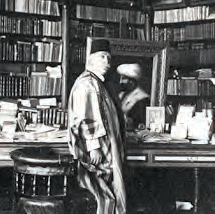 The library of Abdulmecid Efendi
The library of Abdulmecid Efendi
ALI SATAN
Abdulmecid Efendi was a polyglot and a person with many cultural interests. These features are reflected in the remarkable diversity of his library collection. The latter contains a total of 10.867 books in Turkish, Arabic, Persian, German, and French together with 700 newspapers and 3829 items of periodicals in different languages, as well as references including encyclopedias, dictionaries, annals maps, albums, photographs, postcards and various types of documents.
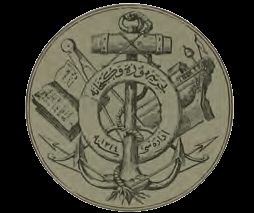 The Bahriye (Navy’s) Library
The Bahriye (Navy’s) Library
MEHMET KORKMAZ
The Bahriye (Navy’s) Library represents the deep-rooted librarianship tradition of the Navy. This library was transferred in July 2020 from the ancient Arabacılar Dairesi (Wagoners’ Department) of Dolmabaçe Palace where it used to function to the building of the Naval Museum. The library contains 23.385 works on a wide range of subjects, such as Turkish and world navies, maritime war history and maritime trade.
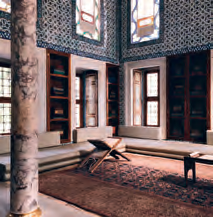 Library architecture in the Ottoman period
Library architecture in the Ottoman period
SEMAVİ EYİCE
The majority of mosques and medreses founded after the Ottoman conquest of İstanbul had small libraries installed in them in one or more book cases. The nicest of the libraries built in the vicinity of a mosque is the one on the right side of Suleymaniye Mosque and separated from it by a baroque-style bronze fence. There are also libraries built as individual entities in later times, all reflecting a distinct style of library architecture. The earliest among these is Köprülü Library built near the Köprülü complex in Divanyolu.
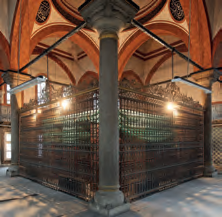 Construction of a library: Ragıp Pasha Library
Construction of a library: Ragıp Pasha Library
ARAS NEFTÇI
Koca Ragıp Pasha was a statesman of the 18th century who rose from civil servant to Vizier. He was also a poet with a Divan (collection of poems). Ragıp Pasha spent his personal fortune on benevolent activities and city rehabilitation works in İstanbul. He had a large complex built at Koska Nişancı Kemal district in Laleli which included a li-brary. The register of its construction process is accessible at the Turkish State’s Otto-man Archives. It contains the details of the construction, which lasted 80 weeks.
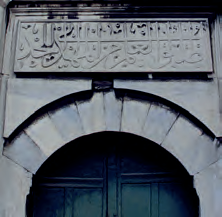 Inscriptions of İstanbul libraries
Inscriptions of İstanbul libraries
ALİ RIZA ÖZCAN
In the Ottoman period, inscriptions used to be placed in the façade of the library buildings – usually above the gate, serving as an identity card of the libraries. The inscriptions generally contained verses from the Quran and hadiths - sayings of the Prophet – relating to science and learning. Each text also indicated the name and status of the founder, the date of construction, and the name of the poet who had authored the inscription. The article examines the inscriptions of some libraries in İstanbul.
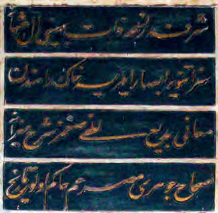 Chronograms relating to libraries of the Ottoman period
Chronograms relating to libraries of the Ottoman period
ABDULLAH UĞUR
One of the marking features of libraries established during the Ottoman period is the chronograms - poems with indications of dates - that figure in their inscription plates. Some indicate the construction date and/ or restoration date of the building. Chrono-grams could be written by more than one poet for the same building among which the founder of the library would select the one to be inscribed. The resulting inscription plate reflects the skill of the poet, the social status and taste of the founder, and other characteristics of the building. The inscriptions are generally standard, comprised of prayers, general information and expressions of praise.
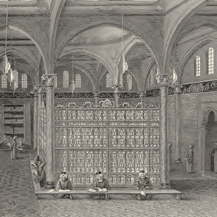 Ottoman libraries as viewed by Westerners
Ottoman libraries as viewed by Westerners
NİHAN YILDIZ
The interest of Western travelers in Ottoman libraries started soon after the Ottoman conquest of İstanbul. Sultan Mehmed II’s giving importance to science and arts convinced the Western world that the Ottomans would have preserved the Greek and Latin manuscripts which were located in the Byzantine libraries. Some even stated that the Turks were taking care of the works that medieval monks had failed to protect. Such positive observations on the situation of Byzantine libraries led Western intellectuals to begin contacts with Ottoman libraries.
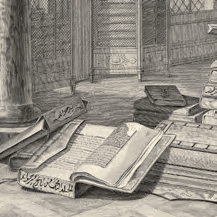 Uncatalogued collections of stories in Ottoman İstanbul: imaginary libraries
Uncatalogued collections of stories in Ottoman İstanbul: imaginary libraries
ELİF SEZER AYDINLI
Notes taken by readers and other written observations concerning the stories of historical or legendary characters that were in circulation in İstanbul during the 18th and 19th centuries reveal that these stories were quite popular from 17th century onwards among the urban population of any sociocultural rank as well as intellectual classes. Fortunately, notes taken down by readers on the hundreds of extant collections of stories hint us about people’s reading habits and preferences.
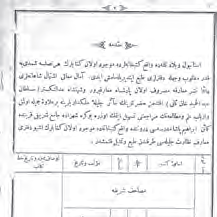 Devr-i Hamidi (Hamidian) catalogs representing an important step in Ottoman librarianship
Devr-i Hamidi (Hamidian) catalogs representing an important step in Ottoman librarianship
GÖKSEL BAYKAN
Sultan Abdulhamid II gave great importance to libraries and librarianship. Cataloguing activities were launched in the libraries as of 1882 upon his orders. These activities representing an important step in Turkish librarianship continued for 12 years. As the cataloguing work progressed, their printing was also started. Fifteen of these catalogs were printed individually and nine were bound together. These catalogs are known by the name of Devr-i Hamidi (Hamidian) Catalogs.
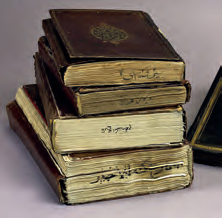 How should an Ottoman library be catalogued?
How should an Ottoman library be catalogued?
SAMİ ARSLAN
The purpose of this article is not to launch a discussion on how to define a manuscript work but to suggest a way to ensure conformity in the cataloguing of manuscripts. New or revised catalogs must contain comprehensive information as regards authors, copy-ists, readers, etc. With catalogs recorded with such care, cultural history would have contributed to liberating political and social history from manipulations of powerful per-sons who shape history. For manuscripts are much more than mere texts or writings.
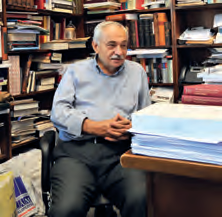 Writing about the history of Ottoman libraries
Writing about the history of Ottoman libraries
İSMAİL E. ERÜNSAL
To write the present article, I had to undertake a comprehensive research in libraries and archives since no previous publication was available focusing exclusively on the libraries of the Ottoman period. In Ottoman times, social services used to be provided through waqfs established by benevolent persons. There were libraries founded as waqfs and books were supplied through waqfs to medrese teachers and students and the general public. Therefore, any research on this subject must be based on the first-hand documents related to the relevant waqfs, and the first document to be consulted when examining a waqf is its establishment deed.
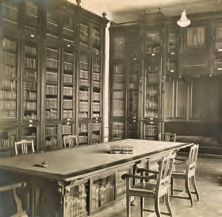 The transformation of libraries, from the Ottoman period to the Republic period
The transformation of libraries, from the Ottoman period to the Republic period
R. TÛBA KARATEPE
The old - new or conventional – nonconventional dichotomy was observable during the Tanzimat (Reform) period in the sphere of libraries as well as in other areas. While waqf libraries continued their operations though with evolving functions, there emerged at the same time new types of libraries. These new libraries were established, at an early stage, within the framework of schools and other institutions that were founded at different levels of education with the purpose of keeping pace with the ongoing developments. Many things were changing: the readers’ profile, and with it, libraries filled with the books that these readers needed or desired.
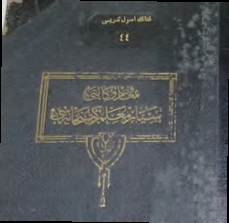 The Teachers’ itinerant library
The Teachers’ itinerant library
SELAHATTIN ÖZTÜRK
The Teachers’ Itinerant Library project has an important place in cultural history. It was operated as a system which brought the library to the reader, preceding the itinerant library of the “Librarian on a Donkey” Mustafa Güzelgöz. The books to be included in the library used to be selected in accordance with the needs of teachers.
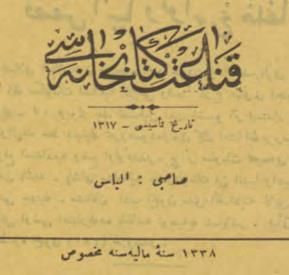 The library as a publisher, the publisher as a library
The library as a publisher, the publisher as a library
MEHMET ERKEN
The term “library” (“kütüphane” in Turkish) designating shelves or boxes where books are placed within rooms or buildings was used from the late 19th century up to the mid-20th with additional meanings, such as book publisher, book seller or book series. How did it happen that the term “library” acquired these different uses? The answer is rooted in the spread of printing techniques during the Ottoman period. It is observed that those additional meanings were related to the outlook that had evolved towards books traded or distributed.
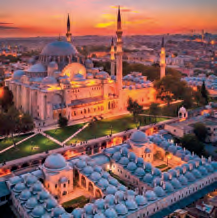 The Turkish Institution of Manuscripts
The Turkish Institution of Manuscripts
MUHİTTİN MACİT
The Presidency of Manuscript Works in Turkey was established by Law 6093 in De-cember 2010. Its main mission is to contribute in transferring the written cultural herit-age to future generations by way of restorations and preservation on one hand, and cataloguing and publishing on the other. Great responsibility is incumbent upon the institution in rendering the assets of this heritage accessible to readers, especially those who appreciate their value.
Süleymaniye Library
NEVZAT KAYA
Süleymaniye Library of Manuscript Works, which was formed by rearranging the first and second medreses of Süleymaniye Külliye (Complex) in the form of a library, contains valuable collections of printed and manuscript works. Collections located in the libraries in diverse districts of İstanbul were brought together under its roof.
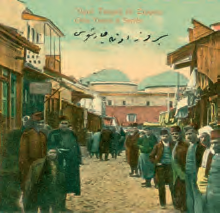 A legacy of Rumelia preserved at Suleymaniye Library: Serres Library
A legacy of Rumelia preserved at Suleymaniye Library: Serres Library
HASAN YILDIZ
Serres, located in the northeastern part of Greece, was conquered by the Ottomans in 1383. On 5 November 1912 it was taken over by the Bulgarians; the city was plundered and its people were massacred. Some of the Muslims who survived managed to collect as many valuable books as they could and hid them in the library. While immigrating in Ottoman territory, they painstakingly brought books with them. A total of 7184 books, of which 2136 were manuscripts and 5048 printed books, were deposited to Suleymaniye Library in 1925.
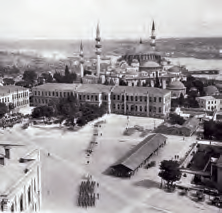 Attempt to take away Süleymaniye Library collections during the occupation of İstanbul by British forces
Attempt to take away Süleymaniye Library collections during the occupation of İstanbul by British forces
SÜLEYMAN ZEKİ BAĞLAN
An officer of the British occupation forces came to Süleymaniye Library with a squad of soldiers and they started to pack rare manuscripts in boxes. Librarian Abdullah Hulusi prevented the transfer of the collection by showing the Devr-i Hamidi (Abdulhamid Period) Catalogues to the Orientalist commander.
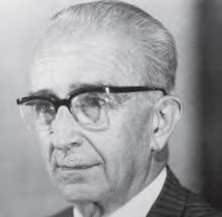 Notes taken by Süheyl Ünver from manuscripts: Library Notes
Notes taken by Süheyl Ünver from manuscripts: Library Notes
S. GÜNAYDIN –
Süheyl Ünver Collection preserved in the archive of the Turkish History Institution contains hundreds of notes taken from hundreds of manuscripts. Part of these, if not most, must have been used by Ünver in his writings. These notes taken down on tiny pieces of paper were extracted from manuscripts preserved in the Ayasofya, Şehid Ali Paşa, Veliyyüddin Efendi, Hacı Beşir Ağa and Fatih Libraries, all attached to Süleymaniye Library of Manuscript Works.
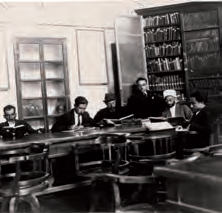 Millet Library of Manuscripts
Millet Library of Manuscripts
MELEK GENÇBOYACI
Millet Library was established on 17 April 1916 by Ali Emiri Efendi. According to its foundation deed and inscription plate, it was originally built by Sheikh al-Islam Seyyid Feyzullah Efendi of Erzurum as a Dar al-Hadith (Hadith school) and known by the name of its founder as “Feyziyye Medrese”. During the establishment process of the library on which Ali Emiri wrote at length in his articles, it was Sheikh al-Islam Hayri Efendi who extended his support. This work involved decisions on re-arrangement of the building while transforming it from school to library, sparing a section for rare books and calligraphy plates and another for visitors and researchers and converting the classrooms into storage places.
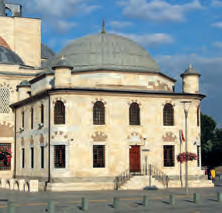 Yusuf Ağa Library in Konya
Yusuf Ağa Library in Konya
İBRAHİM DIVARCI
Yusuf Ağa Library is a building situated at the city center of Konya, near Mevlana’s lodge and adjacent to Selimiye Mosque. The entrance to the library is through a win-dow that was enlarged in recent times to serve as a door. The library was originally built as part of a complex; its original entrance opens to Selimiye Mosque. It contains a total of around 8600 books in printed and manuscript forms. All have been digitized and opened for readers’ reference.
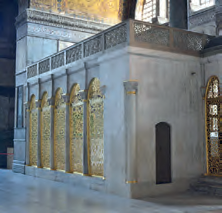 Hagia Sophia Library
Hagia Sophia Library
Sultan Mahmud I was known for his love for books. Among the Ottoman Sultans, he is the one who established the largest number of libraries during his reign. Sources state that he established 12 libraries. Among them are the libraries named after him at Hagia Sophia, Fatih and Galatasaray that were built during his reign and Nuruosmaniye Library completed posthumously. He also got the library at Süleymaniye Mosque re-arranged and the Revan Kiosk converted into a library. Of all these, the Sultan’s favourite was the library at Hagia Sophia.
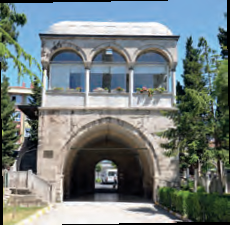 Hekimoğlu Ali Pasha Library
Hekimoğlu Ali Pasha Library
ORHAN M. ÇOLAK
Hekimoğlu Ali Pasha (1689-1758) was a book lover and book collector. During the period of his functions as Beylerbeyi (Governor), he ordered a wooden mosque built at Kocamustafapaşa (İstanbul). Later he ordered this mosque and the nearby Abdal Yakup Tekke (religious lodge) be demolished to be replaced, during 1733-35, by his külliye (complex), comprised of a mosque, a library, a tomb, a tekke, a public fountain and a fountain. The library contains Ali Pasha’s books and also others donated by various personalities.
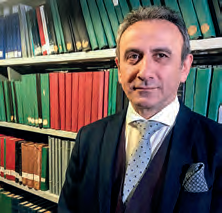 With Ramazan Minder, on Beyazıt State Library
With Ramazan Minder, on Beyazıt State Library
Mr. Ramazan Minder, Director of Beyazıt State Library, tells the history of the library.
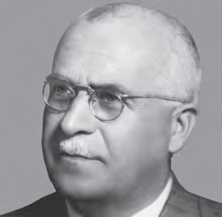 Hakkı Tarık Us and his library
Hakkı Tarık Us and his library
SELAHATTİN ÖZTÜRK
Hakkı Tarık Us led a solitary life and spent a considerable part of his earnings purchasing old books, journals and newspapers with the aim of establishing a library. He ended up collecting almost all such publications that were printed before promulgation of the Law for Collection of Printed Writings and Pictures (1934). Comparison of the holdings of Hakkı Tarık Us Library, which contains nearly 20 thousand books, with those of other major libraries of his time, suffices to show its significance.
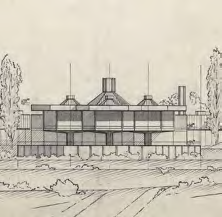 The first municipality library of İstanbul: Atatürk Library
The first municipality library of İstanbul: Atatürk Library
Atatürk Library became functional in 1973 and evolved into one of the richest libraries of Turkey, particularly with respect to its holdings printed in Ottoman Turkish. The majority of books in Ottoman dating from the period from Müteferrika’s prints until the alphabet reform can be found here. It contains a vast collection of newspapers and other periodicals that were published in the Ottoman period.
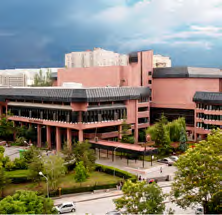 Memories about the National Library
Memories about the National Library
M. KAYAHAN ÖZGÜL
The spread of digital libraries and transformations in reading habits do not reduce but only modify the importance and the functions of the National Library. Changes in the nature of the libraries’ contents and services affect the National Library as well as all other libraries. What is important is whether I, as a loyal reader of this library for over fourty years, will be able to keep pace with the said developments.
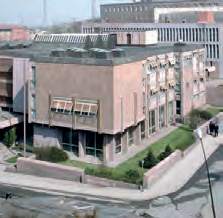 The Library of the Turkish History Institution since the time of the Library of the Council of the Ottoman History
The Library of the Turkish History Institution since the time of the Library of the Council of the Ottoman History
YUSUF TURAN GÜNAYDIN
The Library of the Turkish History Institution is not only a place that holds books but also a crucible where the spirits of historians of the recent past meet. It has connections with more than 200 science institutions and libraries. Considering its holdings of printed works, it is a special library in the true sense of the term. This library has countless distinguishing features as compared to other libraries in Turkey.
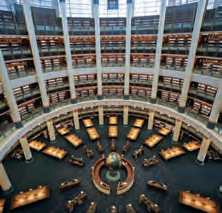 The Nation’s Library of the Turkish Presidency
The Nation’s Library of the Turkish Presidency
The Nation’s Library of the Turkish Presidency which was established through the personal initiative of the President of Turkey Recep Tayyip Erdoğan and opened on 20 February 2020 is the largest library of Turkey. The library aims to encompass the Islamic civilization together with the intellectual heritage of all humankind. With its remarkable collections and services, it is expected to soon become one of the leading libraries in the world.
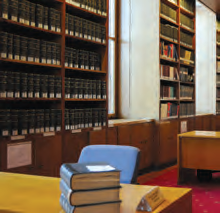 The Library of the Turkish Grand National Assembly (TBMM Library)
The Library of the Turkish Grand National Assembly (TBMM Library)
The Library of the Turkish Grand National Assembly (TBMM Library) became operational as the TBMM Archive on 26 April 1920. It acquired the status of a library as of 18 December 2011 and was assigned to keeping the documentation relating to all activities of the Assembly and serving users.
 Libraries of the Presidents of the Republic of Turkey
Libraries of the Presidents of the Republic of Turkey
TUĞBA ÖRÜN
The personal libraries of the Presidents of the Republic of Turkey are witnesses to, and part of, the cultural heritage of recent political history. Some of them have been opened to public access by the Presidents themselves or their family members but they were generally founded with no future plans. Presidents’ libraries that were given an institutional status by their owners or holders include those of Mustafa Kemal Atatürk, İsmet İnönü, Celal Bayar, Cevdet Sunay, Turgut Özal, Süleyman Demirel, Abdullah Gül and Recep Tayyip Erdoğan.
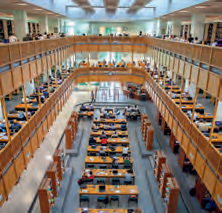 İSAM Library
İSAM Library
MUSTAFA BİROL ÜLKER
The Center for Islamic Studies the Turkish Diyanet Foundation (İSAM) was established in 1988 to contribute to raising the competences of researchers in the field of Islamic studies, providing library and documentation facilities, supporting research projects, to publish scholarly books, in the first place, the Encyclopaedia of Islam, academic periodicals and organize scholarly meetings. ISAM Library initially set up as a relatively small encyclopaedia library grew and expanded in time in consequence of research activities progressing at the Center. Today it is a rich library with collections covering many fields of social sciences, particularly religious sciences, Islamic and Turkish history, culture and civilization.
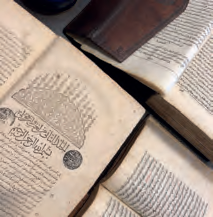 The Library of the Research Centre for Islamic History, Art and Culture (IRCICA)
The Library of the Research Centre for Islamic History, Art and Culture (IRCICA)
NESLIHAN SANDAL
Research Centre for Islamic History, Art and Culture (IRCICA) is the cultural centre of the Organization of Islamic Cooperation (OIC). Its library collection contains materials in 145 languages with emphasis on history, geography, sciences, arts, literature and philosophy concerning the Islamic countries in particular. Its archive contains collections of around 77.000 photographs in total relating to the cities, peoples, cultures, and social traditions of different countries.
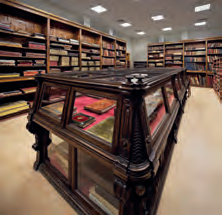 The Music collection of İstanbul University’s Library of Rare Books
The Music collection of İstanbul University’s Library of Rare Books
R. TÛBA KARATEPE
Speaking of a research library, which is its feature that comes to mind first? Its cats, its librarian, its founder, views of its surroundings, tea served, its digital collection, which we savor perhaps after filling some gap of data we had remembered late the night before…. Each time I hear the name of İstanbul University’s Library of Rare Books, I remember its immense gate and its librarians.
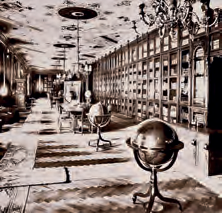 The sad story of Yıldız Palace Library
The sad story of Yıldız Palace Library
HÜSEYIN TÜRKMEN
The contributions of Sultan Abdulhamid II to the development of libraries has not been studied in depth. Various libraries were established during his reign, such as the Kütüphane-i Umumi (Pubic Library) and the catalogues of the Devr-i Hamidi (Hamidian Period). Among these activities, the library established at Yıldız Palace has special im-portance in Turkish librarianship with regard to both its foundation process and history of development.
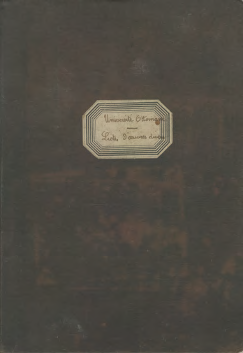 Darülfünun Library’s inventory book for publications purchased from abroad (1915-1916)
Darülfünun Library’s inventory book for publications purchased from abroad (1915-1916)
HALÛK PERK
The register identified as the inventory book of Darülfünun (İstanbul University) Library contains the lists of books imported from abroad. The main headings in the register are in French, with annotations in Ottoman Turkish. It contains records for the years 1915 and 1916.
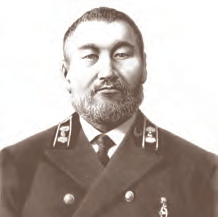 Katanov Collection at İstanbul University’s Institute of Turkish Studies
Katanov Collection at İstanbul University’s Institute of Turkish Studies
MUSTAFA BALCI
The Institute of Turkish Studies established within the İstanbul Darulfunun’s (former name of İstanbul University) Faculty of Letters in 1924 possesses certain pioneering characteristics in Turkish academic history. Firstly, it was the first academic institute to be established by Governmental Decree. Secondly, the valuable book collection that was purchased from Nikolai Federović Katanov. The library of the Institute continues to function as a large special library.
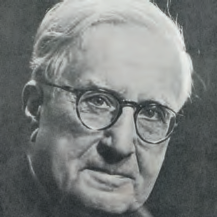 Sadettin Arel Collection at İstanbul University’s Institute of Turkish Studies
Sadettin Arel Collection at İstanbul University’s Institute of Turkish Studies
HARUN KORKMAZ
Starting from his young ages Arel put together a large library. His library contained books on law, medicine, psychology, spiritualism that he had collected both for professional or scientific curiosity purposes, together with one of the largest collections of his time on musical literature. Arel’s library also contained manuscripts on various subjects, mostly music, a remarkably large collection of classical Turkish music scores, and newspaper clippings.
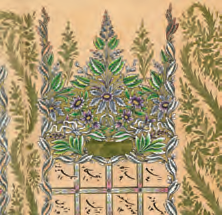 Musical manuscripts at İstanbul University’s Library of Rare Books
Musical manuscripts at İstanbul University’s Library of Rare Books
HARUN KORKMAZ
The Library of Rare Books of İstanbul University was established by transferring the books and photograph albums located at Yıldız Palace to the university at the orders of Atatürk and adding to them the manuscripts assembled from the different faculties of the university. This library has special importance for its holdings of the collections from Yıldız Palace, which s considered as the continuation of Topkapı Palace.
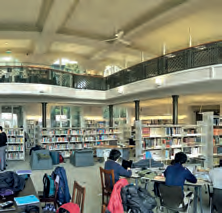 A library as the basis of Bosphorus University: Robert College Library
A library as the basis of Bosphorus University: Robert College Library
ÖNDER KAYA
Robert College has always given importance to its library. The library plays an important role in the school’s educational activities. Robert College library contains around 40 thousand books at present. With the large size of its holdings and other features, it has a special place among college libraries.
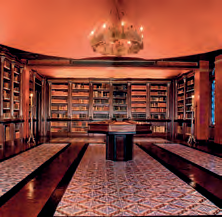 The Library of the Fener Patriarchy
The Library of the Fener Patriarchy
SALİH İNCİ
One of the monuments representing the multicultural history of İstanbul is the Fener Greek Patriarchy which is important for the Orthodox world as the “İstanbul Church”. Beside the churches, monasteries and holy springs, the library that is located on the Patriarchy’s premises is also part of this heritage. It is said that the library contains around 50.000 volumes of books. Their subjects are mostly related to the church and theological sciences.
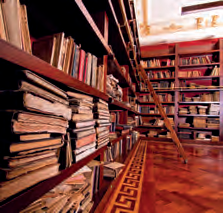 Sakulidis Library
Sakulidis Library
Sakulidis Library has a variety of holdings that include books on religion and the church, together with about 700 legal documents and reports on associations and foundations, around 600 textbooks, translations of novels into Turkish and original Turkish novels of authors from around Turkey, more than 150 volumes on music, and 200 dictionaries and language textbooks. Most of the holdings are related to the Greeks living in the Ottoman state during the 19th and 20th centuries.
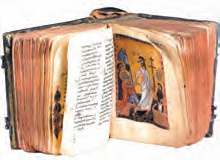 Armenians’ libraries in İstanbul
Armenians’ libraries in İstanbul
BETÜL BAKIRCI
Armenians have been residents of İstanbul for centuries, and four Armenian libraries are functional. Their holdings include research works in various disciplines, including political science, history, language, literature and sociology, regional and city collections, archival records and documents, collections of papers and memoirs. Most of them contain books in Armenian, French, German, Arabic and English along with books in Turkish.
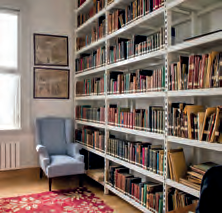 The Library of Tek-Esin Foundation
The Library of Tek-Esin Foundation
Emel Esin was one of the leading specialists of Turkish-Islamic arts. She authored important works, but her name is not familiar to most people in the area. Probably, her library comprised of rare and valuable works is not well known either, although it contains a select collection reflecting the extensive knowledge and culture of its owner.
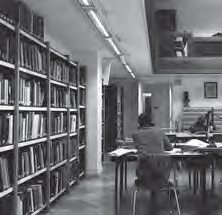 The Library of the German Archeological Institute
The Library of the German Archeological Institute
The library of the German Archeological Institute is the largest of Turkey in the field of archeology with its holdings of 56.000 books and subscriptions to 250 periodicals. Its collection grows by around 1000 books a year. The Institute aims to support archeological research and archeological activities in Turkey and abroad.
The Library of the French Institute of Anatolian Studies (IFEA) The French Institute of Anatolian Studies (Institut Français d’Études Anatoliennes (IFEA) undertakes research in humanities and social sciences focusing on the Turkish and Ottoman worlds. Founded by Albert Gabriel in 1930, it was initially known by the name of İstanbul Archeology Institute. It gradually enlarged the scope of its activities, in a way to cover the ancient Anatolian civilizations as well as the history of present-time Turkey.
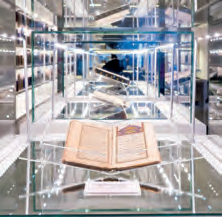 Yapı Kredi Research Library
Yapı Kredi Research Library
Yapı Kredi Sermet Çifter Research Library possesses an important collection on literature, history and arts. It is affiliated with Yapı Kredi Culture and Arts Publishing Co. and operates in Galatasaray since 1992. It contains more than 80.000 books, together with 1635 manuscript works dating from the 14th to the 20th centuries and 1901 rare books from various collections.
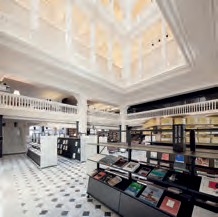 SALT Research Library
SALT Research Library
SALT Research Library is one of the leading special libraries of Turkey. The library, founded by combination of the archive of the Ottoman Bank with Platform Garanti Contemporary Art Center and Garanti Gallery, contains a rich collection specialized on arts, architecture, graphic design, urban studies, social and economic history.
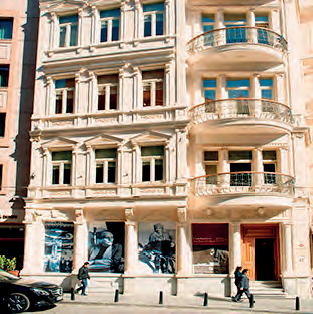 Library of the İstanbul Research Institute
Library of the İstanbul Research Institute
The Library of İstanbul Research Institute which functions within the framework of the Institute, was established as one of the stages of the culture and arts project conducted by Suna and İnan Kıraç Waqf together with Pera Museum. The library aims to project the image of İstanbul on international level by meeting the needs of researchers for printed and electronic reference materials about the city.
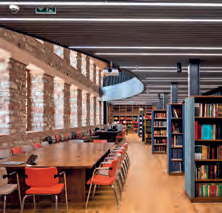 History of Sciences Library of Prof. Dr. Fuat Sezgin and Dr. Ursula Sezgin
History of Sciences Library of Prof. Dr. Fuat Sezgin and Dr. Ursula Sezgin
History of Sciences Library of Prof. Dr. Fuat Sezgin and Dr. Ursula Sezgin contains 27.000 books in various languages in printed and manuscript forms. The library’s section of catalogs and bibliographies is specialized in the history of sciences in Islam.
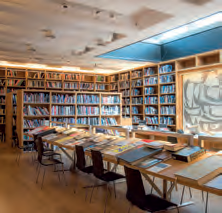 Vitali Hakko Library of Creative Industries
Vitali Hakko Library of Creative Industries
BEGÜM BAŞOĞLU ÖNER
The library’s nucleus was a collection of important books published in and around the circle of Vakko, a fashion trademark. But it gradually grew into a library of “creative industries” with the addition of books in fields that inspire fashion and that are inspired by fashion such as painting, sculpture, photography, architecture and cinema.
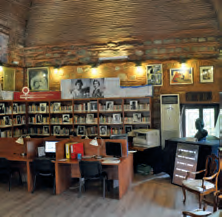 Women’s Works Library
Women’s Works Library
Women’s Works Library is the first and only library in the country to focus on women’s activities. It functions in a building that had won the National Architectural Award in the “Conservation-Revival” branch.
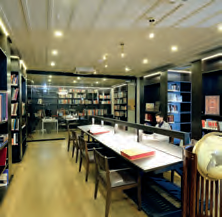 Kazlıçeşme Art Library
Kazlıçeşme Art Library
The Art Library in Kazlıçeşme is decorated with taste worthy of a special library on art. It houses more than 10.000 books in Turkish and other languages in the fields of painting, graphic design, photography, architecture, textile, fashion design, cinema, theater and music.
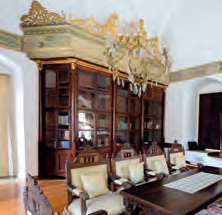 Sultan Mahmud II’s Library in Nicosia
Sultan Mahmud II’s Library in Nicosia
İSMAİL GÜLEÇ
One of the locations where the Ottoman Sultan Mahmud II ordered a library to be built is Cyprus. According to the Sultan’s wish, books were donated to Selimiye Mosque, where the library was set up and which was named Ayasofya (Hagia Sophia) at the time. The collection was enlarged in time with the addition of books from other collections founded by benevolent personalities in Cyprus, thus forming a rich collection that was preserved in the best possible way.
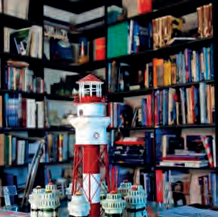 Library of Sivrice Lighthouse
Library of Sivrice Lighthouse
Sivrice Bay at Assos, Babakale has a lighthouse that was built in 1863. “How nice it would be to have a library in this lighthouse” was the idea behind the establishment of its library. This special library contains books in various languages that give information about lighthouses all over the world, lighthouses in all seas, lakes and rivers of the world.
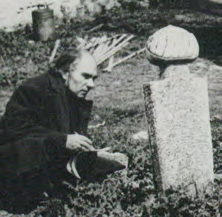 Tekke (religious lodge) libraries according to Revnakoğlu Archive
Tekke (religious lodge) libraries according to Revnakoğlu Archive
MUSTAFA KOÇ
In the Ottoman period in Turkey, Tekkes (religious lodges) of İstanbul used to have val-uable libraries that were enriched especially with the works of Islamic scholars. The archive of Cemalettin Server Revnakoğlu is an important repository of information on tekke libraries as well as other aspects of the history of İstanbul. Revnakoğlu visited more than 400 tekkes, met their sheikhs, copied their deeds and documents, compiled this information in his files and wrote about them in his distinct authorship style.
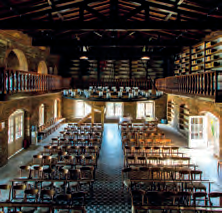 The Library of Nesin Mathematics Village
The Library of Nesin Mathematics Village
Nesin Mathematics Village has several libraries. The largest is Sevan Nişanyan Library with its remarkable architecture. This double-stories structure sits on a 400 sq. m. area and has a conference hall with 250 seats capacity on its ground floor. The library’s collection contains 7000 books on mathematics, philosophy and arts. It can therefore be classified as one of the special libraries of Turkey.
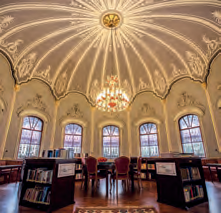 A literature library vs. a writer’s library
A literature library vs. a writer’s library
MEHMET AVCI
Any author’s or writer’s library looks in itself as an attractive, fascinating temple. It is not possible to attribute any such library an institutional status even if it is named “literature library”. A personal library is peculiar to its owner since its identity is defined by its nature and contents.
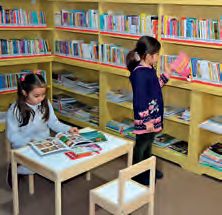 Children’s libraries
Children’s libraries
MEHLİKA KARAGÖZOĞLU ASLIYÜKSEK
Children’s libraries established everywhere in the world are serving the future adults with advanced methods that involve ergonomic and entertaining spaces suitable for child psychology, collections of high quality publications and toys “specific to children” that contribute to their intellectual and artistic education, and library staff and assistants specialized in the field and competent in communicating with children.
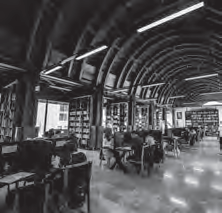 Zeytinburnu libraries
Zeytinburnu libraries
SELAHATTİN ÖZTÜRK
Library management at Zeytinburnu has been conducted as part of cultural activities starting form the establishment of the “Houses of Knowledge” in 2005. In time, the libraries’ capacities were exceeded due to the rising public interest in readership and consequently, growing numbers of visitors, and the inability to meet all needs due to age limits applied in the Houses of Knowledge. Therefore, new libraries have been established. At present, five libraries are operating at Zeytinburnu.
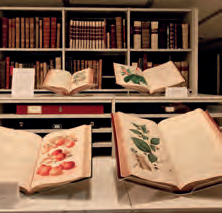 Kew Botanical Library
Kew Botanical Library
The Royal Botanic Gardens, known briefly as the Kew Gardens, cover 120 hectares of land in southwest London. Kew Gardens were set up officially in 1759 and their library was put up around 1852. The library, with its archive, albums of illustrations, collections of rare books, main library and botanical library sections, is located in Kew’s Herbarium.
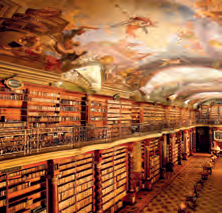 Transformation process of libraries in Europe
Transformation process of libraries in Europe
BETÜL ÖZEL ÇİÇEK
The 18th century saw various developments relating to libraries such as easier access to library services, expansion of library holdings, new modes of acquisition of books and materials for libraries, and evolution of library architecture. Library operations in modern sense of the term spread by mid-19th century. With the proliferation of “public libraries”, libraries were no more restricted to the use of small circles of people.
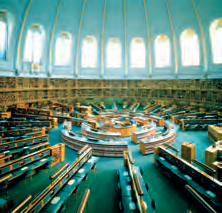 The British Library
The British Library
The British Library is the national library of the U.K. It is an important reference library which contains more than 170 million books and other materials. Its holdings include printed and manuscript books, periodicals, audio-visual recordings, digitized materials, maps, and various other items. The library also contains some precious rare materials that date back to as early 2000 BC.
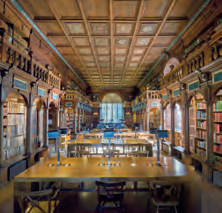 Oxford University Library and Oriental studies
Oxford University Library and Oriental studies
With its holdings exceeding 12 million books, Oxford University Library is the second largest in the country after British Library. It has the right, since 2003, to collect all kinds of materials published in the U.K. It also requests one copy of each publication in the Irish Republic. Its collections include highly valuable rare books.
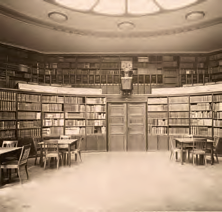 Warburg Library
Warburg Library
ENİS BATUR Warburg Institute’s library was transported, together with its archive, from Hamburg to London in 1933. With eighty thousand books, it constitutes a library myth of modern times. This myth is rooted in a deal that Aby Warburg, the eldest son of a rich family of bankers, made with his brother Max in their childhood, to relinquish his right in the company in return for Max to provide him with all the books he ever wanted.
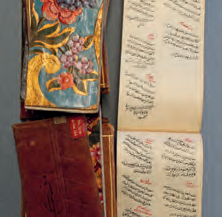 State Library of Berlin Diez Collection
State Library of Berlin Diez Collection
CHRİSTOPH RAUCH
A collection of 400 oriental manuscripts owned by the Orientalist and diplomat Heinrich Friedrich von Diez was donated to the Berlin Royal Library (present State Library of Berlin) in 1817 as part of a large donation package. This collection contains documents on the history of Prussian-Ottoman relations and the interest shown towards Turkish lan-guage and literature. The majority of the manuscripts it contains have been digitized and are accessible through the site of the State Library of Berlin, Oriental Manuscripts (www. orient-digital.de).
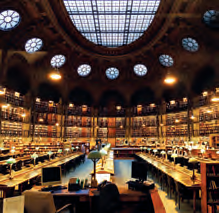 The National Library of France
The National Library of France
Bibliothèque Nationale de France (BnF) was founded in 1461. It served as the royal library until the end of 15th century. Its conversion from royal library to public library took time. Its collections of medieval and modern era manuscripts are the largest in the world. The total number of books in its holdings is more than 14 million.
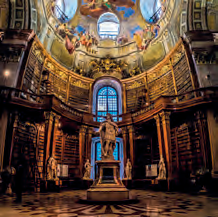 The Austrian National Library
The Austrian National Library
With its holdings exceeding 12 million items, Austrian National Library is the largest in the country. It has sections for printed works, manuscript works, music, maps, papyrus, portraits and paintings, and theater. Its collections of manuscripts and rare books is valuable. Its maps section contains more than 2400 maps and drawings. Its collection of papyrus is rich, containing 180.000 items.
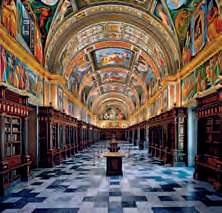 El Escorial Royal Library
El Escorial Royal Library
UĞUR BORAN
The impressive Escorial Royal Library (La Biblioteca del Escorial) rivalled the three major libraries of the 16th century, namely the libraries of Vatican (Rome), Laurenziana (Florence) and Marciana (Venice). It consists of three library sections: the first one is behind the basilica building; the second one is inside the monastery, and the third one, the Royal Library, serves as the public library.
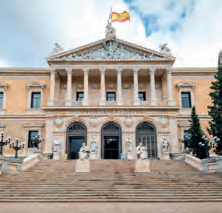 The National Library of Spain
The National Library of Spain
Biblioteca Nacional de España has a special place among all libraries of Spain for its character as a bibliographic museum. It is an immense library formed by the combination of various libraries and archives, and is known as the “Library Palace”.
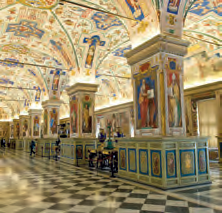 The Apostolic Library of Vatican
The Apostolic Library of Vatican
Biblioteca Apostolica Vaticana founded in the 15th century has been described as “the library of mysteries”. The reason is that it contains many valuable original books and artworks. Its holdings include around 1,6 million books, 150 thousand manuscript works, 8300 incunabula, more than 100 thousand engravings and maps, and about 300 thousand coins and medals.
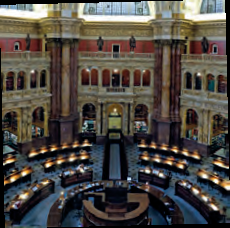 Library of Congress, USA
Library of Congress, USA
This library founded in the year 1800 is known to be the largest in the world with respect to the number of its holdings. About half of the books that it contains are in English and the remaining are in 470 different languages. The collections of books in Arabic, Spanish and Portuguese are of a rich diversity.
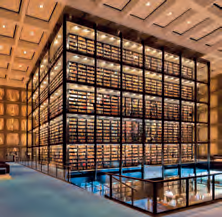 Beinecke Rare Books and Manuscripts Library Turkish manuscripts
Beinecke Rare Books and Manuscripts Library Turkish manuscripts
ÖZGEN FELEK
Beinecke Rare Books and Manuscripts Library at Yale University has a collection of more than one million books, manuscript works and archival documents. It is known to be one of the world’s largest with respect to its holdings of manuscripts. Concerning Islamic manuscripts in particular, it comes third after Princeton University and California University in L.A. with a total of 4597 items.
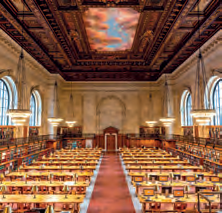 New York Public Library
New York Public Library
New York Public Library is a chain consisting of more than 80 libraries spread all over the city. With its total holdings amounting to nearly 51 million items, the library serves readers from around the world.
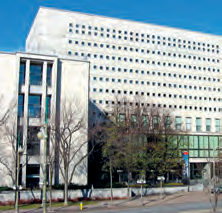 Canada National Library and Archives
Canada National Library and Archives
Canada National Library is considered as the fourth largest of the world. It was original-ly established as a national archive institution and continues to fulfill this mission, while maintaining, at the same time, a library collection of 20 million books, 24 million photographs and more than 24 million other types of materials.
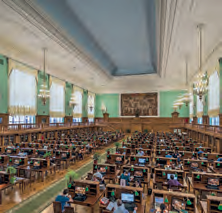 The State Library of Russia
The State Library of Russia
This library has served under three successive political regimes: Tsarist Russia, the So-viet Union and the Russian Federation. Following the Bolshevik Revolution, the library was given the name of “Lenin Library”. Today the general people still continue to call it “Leninka”. With its holdings of more than 47 million, the State Library of Russia is con-sidered as one of the first five largest libraries in the world.
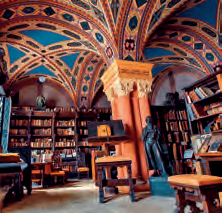 The National Library of Russia
The National Library of Russia
The National Library of Russia was set up by Empress Katerina in 1795 as a public library and evolved to be the first national library of Russia. It has more than 36 million items. Its 420-strong collection of books in European languages provided sources of inspiration for Russian intellectuals in the 19th century.
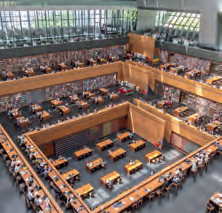 The National Library of China
The National Library of China
According to 2016 data, the National Library of China contains more than 35 million items in 115 languages. Compared to other libraries in the country, it is characterized by the diversity of its collections relating to different religions and cultures. The oldest item in the library consists of a set of inscriptions engraved on tortoise shell and dating from 3 millennia.
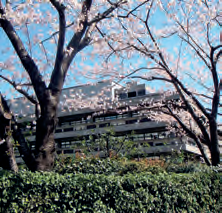 The National Diet Library of Japan
The National Diet Library of Japan
The National Diet Library, i.e. the Library of the Parliament, of Japan, houses more than half a billion items and bears the inscription “Truth is liberty” in Greek and Japanese at its entrance. Its mission is to provide the sources that would guide lawmakers in the true path, record and preserve samples from shared memories of peoples around the world.
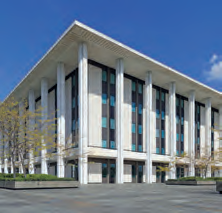 The National Library of Australia
The National Library of Australia
The National Library of Australia (NLA), formerly the Commonwealth National Library and Commonwealth Parliament Library, is the largest reference library in Australia, responsible under the terms of the National Library Act 1960 for “maintaining and developing a national collection of library material, including a comprehensive collection of library material relating to Australia and the Australian people”, thus functioning as a national library.
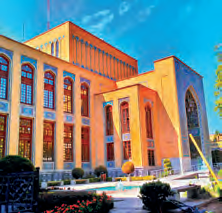 The libraries of Iran
The libraries of Iran
TURGAY ŞAFAK
The first library established in Tehran outside the mosques and medreses was that of the Darulfunun, which was the first institution of higher education in the city. The Darulfunun was founded in 1851 and its library took shape 12 years later, in 1863. The library started with a small collection, which later came to be considered as the nucleus of the National Library. On the other hand, the first public library of Iran in the modern sense of the term, was established not in the capital Tehran but in Tabriz, by Mohammad Ali Terbiyet, who had seen the benefits provided by the public libraries of İstanbul.
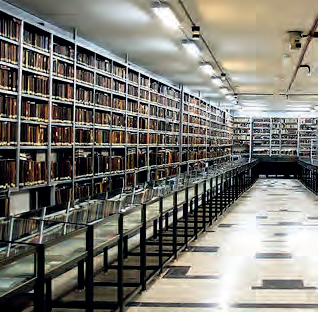 Ayetullah Mar’aşî Necefî’s Library of Manuscripts
Ayetullah Mar’aşî Necefî’s Library of Manuscripts
YUSUF TURAN GÜNAYDIN
This library consists in its major part, of the manuscripts that Ayetullah Mar’aşî collected, often with big sacrifices, starting from his young age. What encouraged Ayetullah Mar’aşî to such a difficult undertaking was his seeing some Western orientalists take away manuscripts they had collected in Iran. His disappointment led him to gradually acquire around 16 thousand printed and manuscript books, thus keeping them in place.
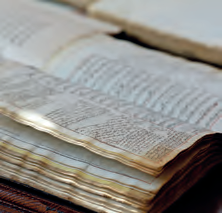 A glimpse at manuscripts in Kurdish
A glimpse at manuscripts in Kurdish
AYHAN TEK
It can be said with certainty that the first to be interested in the history and culture of Kurds were Russian Orientalists. The related archive of the Academy of Oriental Stud-ies at St Petersburg is 200 years old and one of the richest with regard to works in Kurd-ish language. In Europe, the first to be mentioned would be the Oriental Manuscripts Section of the State Library of Berlin. In the Eastern world, Baghdad is a major reposito-ry of Kurdish books. As to Turkey, it is mainly in İstanbul that one finds manuscript works in Kurdish.
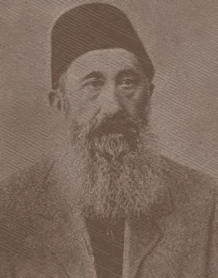 Arif Hikmet Bey’s Library in Medina
Arif Hikmet Bey’s Library in Medina
BİLAL KEMİKLİ
Arif Hikmet Bey fulfilled several official functions, working as: chief judge in the cities of Jerusalem, Cairo and Medina, Kazasker of Rumelia and Anatolia, Inspector during the Tanzimat, official in the civil registry services, nakibüleşraf (official in charge of keeping the records of the descendants of the Prophet) and Sheikh al-Islam. The most important part of his legacy is the waqf library he set up in Medina. It contained 5000 books. For the operations of the library and its staff, he had donated the revenues of five houses and a date orchard he owned in Medina, together with shops, gardens, bathhouses, khans, and various buildings endowed with fireplaces, water wells and other facilities that he had in various districts of İstanbul including Üsküdar, Kuzguncuk and Sarıyer.
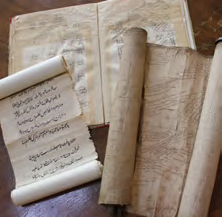 Manuscript libraries in Central Asia
Manuscript libraries in Central Asia
Following the dissolution of the Soviet Union in 1991, five new states were founded in Central Asia: Tajikistan, Uzbekistan, Turkmenistan, Kyrgyzstan and Kazakhstan. Once independent after three centuries of cultural pressures and denial of their cultural identities under Soviet rule, these countries had recourse to the reference sources indicative of their identities. New archives and libraries were established and studies were undertaken with enthusiasm. This joint article by Ashirbek Muminov, Toktar Albekov, Ayhan Bekpulatova, Gulahat Abikova, Shovosil Ziyodov, Otabek Muhammadiyev, Asel Isaeva, Fahriddin Ibragimov, Sancar Gulamov and Sharifdjan Islamov introduces the manuscript libraries of the Central Asian Turkic states.
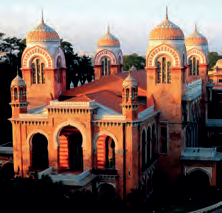 The Oriental Manuscripts Library of India
The Oriental Manuscripts Library of India
The Government Oriental Manuscripts Library in Tamil Nadu, India, contains around 72.315 manuscript works in the Tamil, Sanskrit, Telugu, Kannada, Marathi, Urdu, Arabic and Persian languages. These items belong to three collections: Mackenzie Collection, the collection of manuscripts in Tamil, Telugu and Kannada belonging to the linguist and traveler Dr. John Leyden, and Charles Philip Brown’s collection of manuscripts in Sanskrit brought from Telugu in 1855.
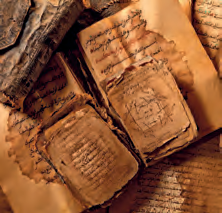 The Timbuktu manuscripts, an African treasure
The Timbuktu manuscripts, an African treasure
OSMAN KAĞAN YÜCEL
Ahmed Baba Research Institute was established in Bamako in 1977, after Mali gained independence, with funding extended by Kuwait and by UNESCO. It was the first li-brary where the Timbuktu manuscripts were assembled. The library contains 18 thou-sand manuscript works, almost all in Arabic and a small part in local languages.
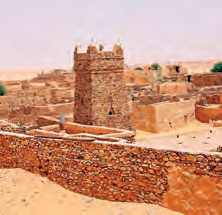 The desert libraries of Chinguetti
The desert libraries of Chinguetti
Chinguetti in Mauritania has been known for centuries as Bilad Shinqit (Chinguetti land). In our time, the town showcases privately owned desert libraries with rich holdings. They belong to four families, namely al-Habot, al-Ahmad Mahmud, al-Hamoni and Ould Ahmad Sherif. They are well organized, catalogued, and serve both as reference libraries and touristic must-sees. This cultural tourism is the town’s main source of revenues.
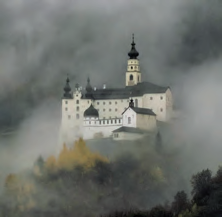 Modern-day revival of an old library: Library of Marienberg Abbey
Modern-day revival of an old library: Library of Marienberg Abbey
Marienberg Abbey in Northern Italy, the highest above mean sea level in Europe -1.340 m.-high – was built in the year 1150. This Benedictine abbey, established as a school for monks, is frequently visited today for its church, its museum and its library. The li-brary in this 12th century building contains more than 100.000 early printed rare books, which are among the features that distinguish it from other abbey libraries.
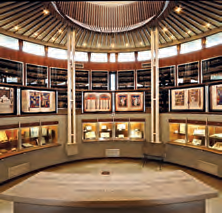 Mekhitarist Library in Saint Lazarus, an archival treasury
Mekhitarist Library in Saint Lazarus, an archival treasury
BETÜL BAKIRCI
Saint Lazarus Island can be seen as an epitome or a nucleus of the evolutions having occurred in Armenian society. Mekhitarist Library at Saint Lazarus offers access to books on diverse subjects, particularly books on Armenian language, history and culture printed on the spot, including books translated from Greek, Latin and other European languages and books related to the cultures of the various peoples having interacted with Armenians.
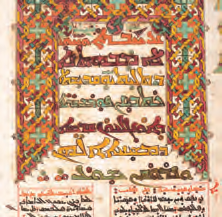 Manuscripts in Syriac preserved in libraries
Manuscripts in Syriac preserved in libraries
ABDULLAH RIDVAN GÖKBEL
Manuscripts in Syriac are found in libraries everywhere in the world. Those found in Turkey are concentrated in their majority in Diyarbakır, Mardin, Elazığ and Adıyaman. Syriac works on different subjects are also found in the Süleymaniye Library of Manuscript Works, the Library of the Regional Directorate of Manuscript Works in Konya, and the Library of Topkapı Palace Museum.
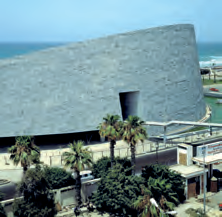 The new Alexandria Library
The new Alexandria Library
The new Alexandria Library (Bibliotheca Alexandrina) was built on the site of the ancient Alexandria Library in 2002. The new Alexandria Library was designed by the Norwegian architectural design office Snøhetta Arkitektur Landskap and sits on a land of 70 thousand square meters. The reader-friendly library receives more than 1,5 million visitors per year.
 A glimpse at the history of destroyed libraries
A glimpse at the history of destroyed libraries
MERVE AKBAŞ
Unfortunately, the history of libraries begins with the stories of libraries that were destroyed by human hand. Historians, archeologists and other researchers tracing back the history of libraries come across such cases of destruction.
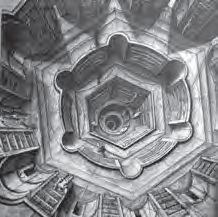 The Library of Babel
The Library of Babel
JORGE LUIS BORGES
The universe (which others call the library) is composed of an indefinite and perhaps infinite number of hexagonal galleries, with vast air shafts between, surrounded by very low railings. From any of the hexagons one can see, interminably, the upper and lower floors. The distribution of the galleries is invariable. Twenty shelves, five long shelves per side, cover all the sides except two; their height, which is the distance from floor to ceiling, scarcely exceeds that of a normal bookcase.
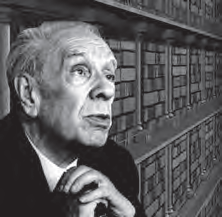 Jorge Luis Borges: The blind librarian with extraordinary vision
Jorge Luis Borges: The blind librarian with extraordinary vision
NORIKO ASATO
The internationally admired Argentinian writer Jorge Luis Borges (1899-1986) was also a librarian and a staunch defender of intellectual freedom. To Borges’s readers across the globe, it is well known that he was the head of his country’s National Library for many years and a municipal library worker before that, but outside of Argentina, little attention is paid to assessing his actual work as a librarian.
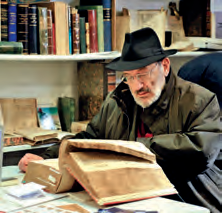 Libraries in the eyes of Umberto Eco
Libraries in the eyes of Umberto Eco
BETÜL PARLAK
Umberto Eco is known for his attachment to books and libraries and his esteem for writers who give a central place to books in their literary world. He shared his views about libraries in his lec-ture marking the 25th anniversary of Biblioteca Communale di Milan delivered on 10 March 1981. He started his lecture with a quote from Jorge Luis Borges’s The Library of Babel, which had in-spired him when he was writing The Name of the Rose, his first novel published a year before, in 1980. Eco also introduced his public to two of his favourite libraries: the Sterling Memorial Library in Yale and the Toronto University Library.
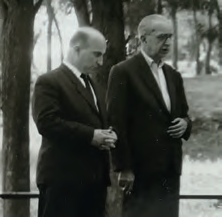 Süheyl Ünver’s experience on American libraries reflected in Rauf Tunçay’s archive
Süheyl Ünver’s experience on American libraries reflected in Rauf Tunçay’s archive
LOKMAN COŞKUN
Prof. Ord. Dr. Ahmet Süheyl Ünver was a faculty member at İstanbul University when, in 1958, he was accepted as visiting professor at Columbia University for studies and research. During the period of his stay there, he was impressed by the peaceful atmosphere, the orderliness, cleanliness and full-fledged equipment of the libraries. He noticed the diversity of the funds and archives, the importance given to cultural assets, and the meticulosity in the presentation of library materials.
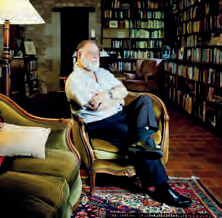 The ideal library
The ideal library
ALBERTO MANGUEL
In the ideal library, no shelf is positioned higher or lower than the reach of the reader’s arm. The ideal library is organized without labeling. No section of the ideal library is conclusive. The roadmap of the ideal library is its catalogue. The ideal library is both secluded and public, intimate and open to social intercourse, meant for meditation and for dialogue, parsimonious and generous, erudite and questioning, full of the despair of plenty and the hope of what has not yet been read.
The library as chance
ALBERTO MANGUEL
The library is not only a place of both order and chaos; it is also the realm of chance. Books, even after they have been given a shelf and a number, retain a mobility of their own. Left to their own devices, they assemble in unexpected formations; they follow secret rules of similarity, unchronicled genealogies, common interests and themes.
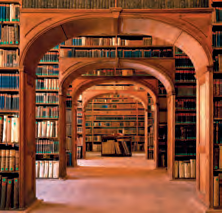 The art and manners of arranging books
The art and manners of arranging books
GEORGES PEREC
The increasing number of our books may create problems: the problem of space, first, and then the problem of order. Books are not dispersed but assembled. Even though we want to keep them, we might pile our books away into trunks, put them in the cellar or the attic, or in the bottoms of wardrobes, but we generally prefer them to be visible. Between order and disorder, it is not a bad thing in any case that our bookshelves should serve from time to time as joggers of the memory, as cat rests and as lumber rooms. In my own case, nearly three quarters of my books have never really been classified.
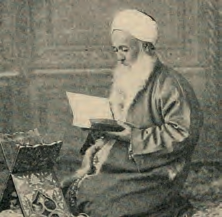 Sufis as librarians
Sufis as librarians
MEHMED AKIF KÖSEOĞLU
Libraries have been favourite work places for Sufis in the Turkish Republic period as well as in Ottoman times. Many people selftaught in libraries were appointed to various posts in public libraries taking into account their affinity with books. Some of them were: Ahmed Şevki Efendi, Ali Bahaeddin Toköz, Mehmed Fevzi Efendi, Şeyh Ahmed Ziyaüddin Gümüşhanevi Efendi, Yusuf Zahir Efendi, M. Hazmi Efendi, Ahmed Remzi Dede, Hafız Mahmud Fahreddin Efendi and Ömer Lütfi Feyzi Efendi.
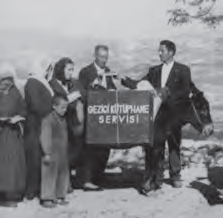 Mustafa Güzelgöz, the “Librarian on a Donkey”
Mustafa Güzelgöz, the “Librarian on a Donkey”
It may sound incredible, but there has been a “Librarian on a Donkey”. Novels were written and TV programs made about him. This person was Mustafa Güzelgöz, a librarian who used to carry boxes of books to villages of Ürgüp, in Turkey, on donkey back. He was known as the “Librarian on a Donkey”.
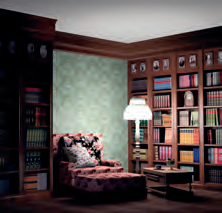 Library: its presence is a burden; its absence, a worry
Library: its presence is a burden; its absence, a worry
HASAN HÜSEYİN BAHADIR
Why should anyone acquire a library, and fill its shelves with books? Two libraries can never be identical even if their holdings consist of the same items, since each one reflects the character and the preferences of its founder. Someone would put a given book on the top shelf while someone else would place it lower. Someone would classify the books by name of author, while another would order by surname. Each library is arranged according to mainly its expected functions.
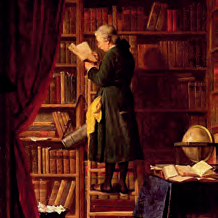 Bibliophiles
Bibliophiles
NECİP ASIM YAZIKSIZ
In ancient times, books were rare commodities and all intellectuals were bibliophiles. These are people who fully recognize the scientific and material value of the book and regard it as an extraordinary object. We are all attached to the book through our sacred texts and the social traditions relating to them. In popular language, anything that is regarded highly would be referred to with the affirmation: “it is mentioned in the Book”. People also attach a high value to paper. All this shows that we are all book lovers.
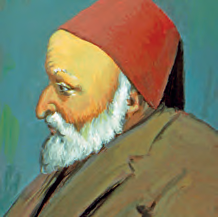 Ali Emiri Efendi: the sultan of the empire of books
Ali Emiri Efendi: the sultan of the empire of books
ALİ BİRİNCİ
One of the eminent figures of recent history in the realm of books is certainly Ali Emiri Efendi. His name came to be associated with love for books, since he is always remembered for the books he authored and the journals he published with his personal means, the library he set up, and also, his discovery of Kaşgarlı Mahmud’s monumental dictionary Divanu Lugati’t-Turk (11th century) which was a valuable contribution to Turkish world of learning.
S. M. Tevfik’s library
EKREM SALTIK
S. M. Tevfik was one of the leading book collectors of the Second Constitution period in Ottoman Turkey. His library contained 226 books printed in İstanbul, 49 printed in Iran, his father’s country, 65 printed in Beirut, Syria and other Arab countries and 187 from Egypt. His books from South Asia, that he must have brought on return from his trip there as Sebilürreşad correspondent, are in the number of 172. His library also con-tained 917 rare books including 27 manuscripts in Arabic, Persian and Turkish.
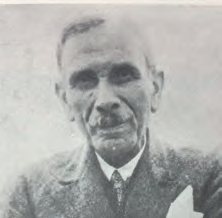 Halil Edhem Eldem’s library
Halil Edhem Eldem’s library
One of the most valuable personal library collections bequeathed to the Turkish History Institution is that of Halil Edhem Eldem (1861-1938). The collection contains major Ottoman chronicles and is also rich in biobibliographic sources. Some of the books carry on their first pages Halil Edhem’s notes in Ottoman letters written down with a pencil.
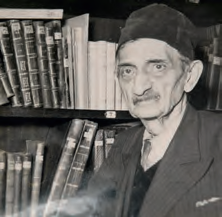 İbnülemin Mahmud Kemal İnal’s library
İbnülemin Mahmud Kemal İnal’s library
DURSUN GÜRLEK
Ibnülemin Mahmud Kemal İnal’s mansion ın Beyazıt Mercan, İstanbul, used to be a lodge of scholarship, learning, culture and music. İbnülemin inherited the book collection of his father and enlarged it day by day with new acquisitions. Later, in 1953, he donated this impressive library, together with his own collections of newspapers and journals and some antique objects, to the University of İstanbul.
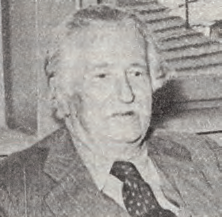 Osman Ferit Sağlam’s library
Osman Ferit Sağlam’s library
The library of Osman Ferit Sağlam (1876-1958) was donated in 1959 to the library of the Turkish History Institute, of which he was a member, following his will. Together with his books, his rich photograph archive, some archival documents, and the manuscripts of his unpublished studies on coins, are also at the Institute. The collection of more than 700 books of Osman Ferit Sağlam can be easily identified on the shelves of the library by the donation label stamped on them.
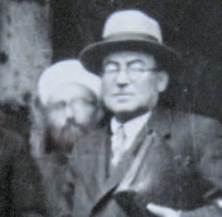 Osman Nuri Ergin’s library
Osman Nuri Ergin’s library
MÜSLÜM YILMAZ
Osman Nuri Ergin (1883-1961) was one of the Turkish intellectuals who endeavored to keep alive the cultural achievements of recent history and protect their heritage from deterioration. In addition to the services that he rendered to the municipality and the urban development in İstanbul, Osman Nuri Ergin is also known for his personal library. Leading researchers of his time benefitted from his collection. He used to visit booksellers frequently to collect new publications, and to purchase manuscripts from the shop of his friend Raif Yelkenci. The library he was forming in this way was continually expanding in volume, certainly within the limits of space availabilities at his home.
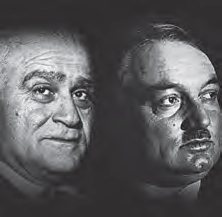 Portraits of two authors and bookworms
Portraits of two authors and bookworms
MEHMET SAMSAKÇI
The 398 books in the tiny library that is arranged in a few closet shelves in the lower floor of the museum of Yahya Kemal Institute consist mostly of French books of poetry, history, political and travel literature. It is seen that like his student Tanpınar, Yahya Kemal was fond of Régnier, Valéry and Gide. Among the travel books there, those of Nerval and Gautier are the first ones to catch the eye.
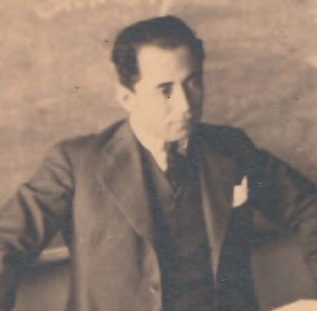 Mükrimin Halil Yinanç’s library
Mükrimin Halil Yinanç’s library
ÖMER HAKAN ÖZALP
During his studies at Mulkiye Mektebi (School of Administration) starting from 1918, Mükrimin Halil Yinanç regularly visited the libraries of Hagia Sophia, Nuruosmaniye, Millet, Ahmed III and Süleymaniye. During the period from 1919 to 1925, he perseveringly read and copied passages from all manuscripts available in İstanbul libraries on the subject of the Seljukid State and the Beyliks period. Later he visited the major libraries of Europe and collected the Syriac, Armenian, Georgian, Byzantine and Latin works that could serve as sources on the history of the Turks of Anatolia.
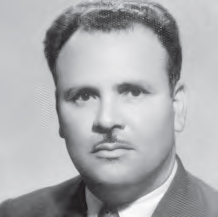 Muhammed b. Tavit al-Tangi’s library
Muhammed b. Tavit al-Tangi’s library
The Moroccan scholar al-Tangi (1918- 1974) was appointed professor to the Chair of Islamic Philosophy at Ankara University’s Faculty of Theology in 1953, where he taught courses on Islamic philosophy. Al-Tangi’s library collection, which travelled together with him between Morocco and Turkey, was purchased by the Turkish History Institute some years after his death. The collection consists mainly of books in Arabic and comprises some rare works of varying types about Ibn Khaldun.
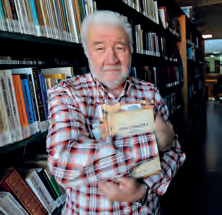 Yavuz Argıt’s library
Yavuz Argıt’s library
AHMED NEZIH GALITEKIN
I said “book lover” but I should have perhaps said “bookaholic”. Yavuz Argıt certainly belonged to both groups. An ardent reader all his life, he donated his personal library to ISAM (Center for Islamic Studies, İstanbul). Hundreds of graduate students are benefiting daily from his 25 thousand-strong book collection.
 Yılmaz Öztuna’s library
Yılmaz Öztuna’s library
AHMET ÖZCAN
Yılmaz Öztuna had decided to sell his library and bequeath the receipts to his grand-child instead of donating it to some institution. His library collection includes some rare books with engravings published in the West about Turkish history and Turkish music. It also contains issues of the Almanach de Gotha, which is another rare category, together with collections of periodicals, annals and numerous other historical sources.
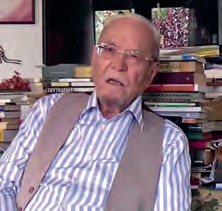 Halil İnalcık’s library
Halil İnalcık’s library
The library contains more than 13.000 books relating to Ottoman history in Ottoman, Persian, English, French, Italian, German and other languages, to-gether with more than 2.000 off-prints of articles signed by their authors for İnalcık and around 5000 copies of journals from research institutes in various countries.
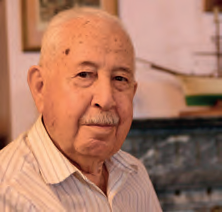 Semavi Eyice’s library
Semavi Eyice’s library
Prof. Dr. Semavi Eyice, an admirer of İstanbul, a world-renown authority on Turkish and Byzantine arts and scholar in cultural history, sold his famous library to the İstanbul Research Institute. The collection consists of books about Byzantine history and arts, Islamic, Turkish and Ottoman history, arts and literature, archeology, and travelogues.
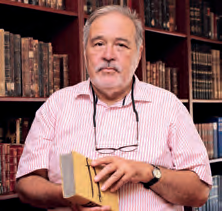 İlber Ortaylı’s library
İlber Ortaylı’s library
Prof. Dr. İlber Ortaylı, a leading authoritative scholar in Ottoman history, calls the library the “memory of humanity”. It is known that he always collects books and owns more than one library collection. The collection that Ortaylı donated to the Nation’s Library of the Turkish Presidency consists mainly of books on history, philology, law and sociology.
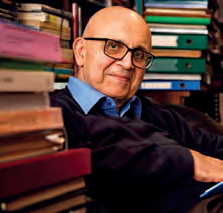 Zafer Toprak’s library
Zafer Toprak’s library
The library of Prof. Dr. Zafer Toprak, historian, academician and author, can be considered as one of the biggest personal libraries in Turkey. Its holdings are arranged at three different loca-tions and cover a wide range of subjects within Toprak’s fields of specialization. His library also includes an archive of newspapers and journals. Prof. Toprak says that some of the most valua-ble items in the collection are the booklets and pamphlets he collected from the central offices of political parties in the 1960s and 70s, and what makes them special is that none is available any-more even in state libraries.
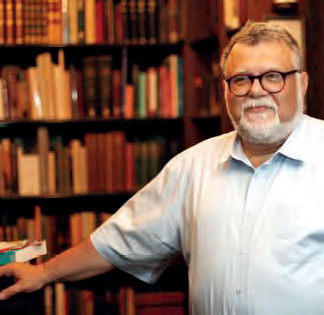 Celâl Şengör’s library
Celâl Şengör’s library
Prof. Celal Şengör’s personal library contains 50 thousand books. Another distinguish-ing feature of this library is that it is a special library on geology. Known as the largest special library in Turkey, it is also one of the world’s top libraries in its area. Its estimated worth is 4 billion Euros. Şengör describes it as “my handy library, where I do scientific work”.
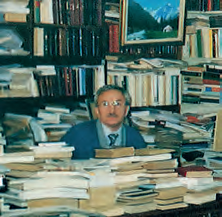 Ali Birinci’s library
Ali Birinci’s library
I believe both my writings and the books I own are evidence to my love for books. Recently, the term “researcher-writer” came to be used widely, but personally, I do not feel to be more than a “researcher-reader”, since I do research and then I read the materials I collected, and once in a while I write. My writings would reveal that I do not qualify as a “researcher-writer” but that I am a “researcher-reader”. I am satisfied with the status of “reader”.
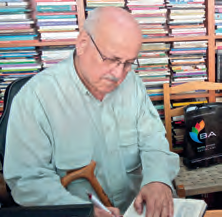 Ahmed Nezih Galitekin’s library
Ahmed Nezih Galitekin’s library
FATİH DALGALI
“I spent 52 years as a book lover. I feel I led a very happy life. I like books, I like to devote time to books. It is my will that my children do not sell any one of my papers, even those I purchased, and donate all of them either to ISAM (Center for Islamic Studies, İstanbul) or to the Ottoman Archives.”
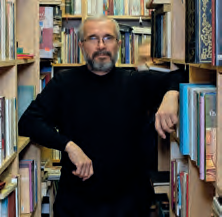 Ahmet Kot’s library
Ahmet Kot’s library
We learn from an interview with Ahmet Kot that his library, one of the top private libraries in Turkey, has 100.398 works. These include books on nearly 400 themes from literature and history to anthropology and philosophy, from architecture and philosophy of art to dictionaries and encyclopedias, in close to fifty languages and mostly in English and Turkish, together with nearly 300 titles of periodicals constantly growing and perhaps never-ending in numbers. The library also contains the collections of One Thousand and One Nights tales and the Book Culture Library.
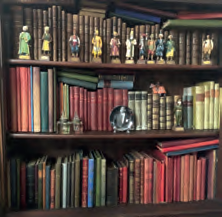 Buying and selling libraries
Buying and selling libraries
EMİN NEDRET İŞLİ
The books that I have seen and traded since my apprenticeship, the archives I saw being sold or bought, the libraries I helped to build up, all these will be covered in the interview we prepared together with my dear friend Erhan Altan. In order to enlighten the coming generations, those aspiring to go into the book business and those interested in the history of this field of activity, I shall speak of the library collections that I have bought or sold in recent years.
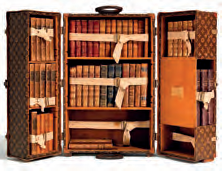 A miniaturized traveling library
A miniaturized traveling library
Napoléon Bonaparte was an ardent bookworm and had a personal library. But his military career was too active to allow him to sit and read as he pleased. He therefore used to carry about his favorite books and those he wanted to read wherever he went, and the miniaturized format of his books placed in boxes seems to be his own invention worthy of his genius.
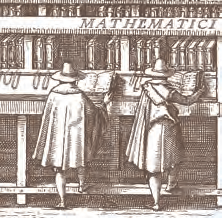 Chain, chest, and curse used to combat book theft in medieval times
Chain, chest, and curse used to combat book theft in medieval times
Combating book theft had led some of the medieval libraries to adopt interesting measures. A method applied to protect rare, large-size, heavy and/or precious books was to chain them to a hook on the shelf by means of a special device implanted in the book cover. In this way, readers could easily consult the book without being able to remove it. This rather costly method was applied until the 18th century but later replaced by others. Two of the chained libraries in Europe having survived in intact form are Malatestiana Library in Cesena, Italy, and the chained library at Hereford Cathedral, England.
 Library as a punishment
Library as a punishment
Since 2006, article 5237 of the Turkish Penal Code allows sentences to short-term imprisonment (of one year or less) to be converted to “reading books in the library”. Objections are raised to such conversion on the grounds that “there could be no such punishment as reading” but its benefits are also taken into account.
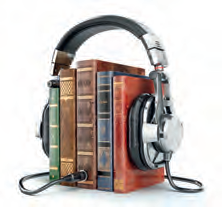 Audio libraries
Audio libraries
People with vision impairment have been able to use libraries since the invention of the Braille Alphabet. Another major breakthrough in the provision of library services to people with visual impairment has certainly been the use of audio libraries.
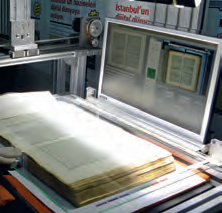 Digital libraries
Digital libraries
Digital libraries, which are also referred to by different names such as virtual libraries, libraries without walls, wired libraries, paperless libraries, numeric libraries, or e-libraries, have been described in varying ways. The Digital Library Federation defines them as “Organizations that provide the resources, including the specialized staff, to select, structure, offer intellectual access to, interpret, distribute, preserve the integrity of, and ensure the persistence over time of collections of digital works”, while the Online Dictionary for Library and Information Science defines the digital library as “A library in which a significant proportion of the resources are available in machinereadable format and accessible by means of computers”.
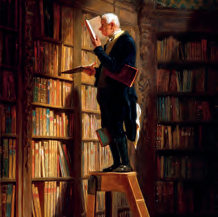 Library ladders
Library ladders
Library equipment and accessories have evolved gradually over time. First to be put to use were the indispensable equipment such as shelves, followed by accessories providing functional facilities that were created as needs arose. One of such relatively recent devices is the library ladder. According to the available records, the first library ladder was manufactured during the “Victorian Era”, which took place from 1837 to 1901 and was marked by important developments in the spheres of industry, culture and economy.
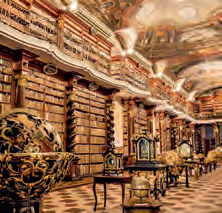 Library globes
Library globes
ZEYNEP DURUKAL
The halls of historical libraries around the world are enriched and embellished by globes - “terrestrial globes” and “celestial globes”. Classified as cartographic items among non-book materials, these globes are each one unique works crafted by geographers, astronomers and map-makers over the past centuries starting from the dawns of sciences in the different regions of the world up to the manufacturing age, after which they became rare library items or antique valuables in private and institutional collections. Presently, major libraries holding historical globes have embarked upon digitization projects to render their images accessible online.
 Green library
Green library
Libraries, like any other institution, are forced to adapt their operations to global challenges as a requirement of consciousness and responsibility. This consciousness seems to have increased further in recent years, and it looks as if “green consciousness” has become determinant. Green libraries that allow optimal uses of resources, employ recyclable, sustainable materials with less chemical content and allow saving in electricity and water consumption, are increasing in recent years.
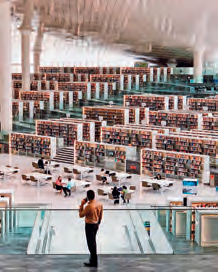 New generation libraries
New generation libraries
The new millennium has brought a climate of change everywhere in the world. Developments are happening gradually on global scale in all spheres, including daily lifestyles, modes of work and production, money-making methods, economic systems, leisure and entertainment habits, food and nutrition regimes. Then, is it possible to follow and interpret this massive trend of transformation from the perspective of libraries?
 Mobile libraries
Mobile libraries
HÜSEYIN ODABAŞ
Mobile libraries are among the main components of public libraries and have the mis-sion to serve all segments of population. Mobile libraries circulating by motor vehicles started in Turkey in 1963. Under the Ministry of Culture and Tourism, they served a long time in minibuses and buses and their number varied largely over time. According to 2018 figures, the number of mobile libraries serving within the provincial libraries under the Ministry was 54.
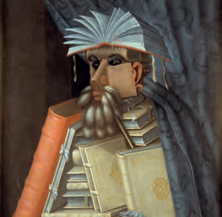 Libraries of the future
Libraries of the future
Speaking about libraries of the future entails a focus on librarians of the future. Since the 2000s, libraries are evolving into fullyfledged, sustainable institutions with composite functions. Feature expectable from future libraries are already present in libraries of most developed countries. But some radical changes generated by transformations in libraries require that librarians acquire multidisciplinary competences to meet the needs of the future.
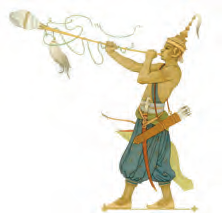 The image of the library in the Tales From One Thousand and One Nights
The image of the library in the Tales From One Thousand and One Nights
MEHMET ALİ AKKAYA
The Tales From A Thousand and One Nights have brought the Eastern and the Western cultures together by means of a common cultural practice, story-telling. They reached wide readership across the world and qualified as a property of folkloric heritage to be preserved on global scale. When speaking of the book or the history of readership, it is not possible to exclude the Tales From A Thousand and One Nights from the story.
 Eco’s description of the library
Eco’s description of the library
MUHAMMED NUR ANBARLI
Umberto Eco’s cult novel The Name of the Rose contains dystopic images relating to the “book”, the “library”, the “librarian” and the “reader” that deserve in-depth discussion. The library is one of the mysteries in the novel and appears from the outset as an ele-ment of suspense. Melk Abbey possesses the “greatest” library of the world; this is a source of pride but at the same time a cause of tension. Nobody can access it except the old and blind, retired librarian Jorge of Burgos, the librarian, Malachi of Hildesheim and his assistant, Berengar of Arundel.
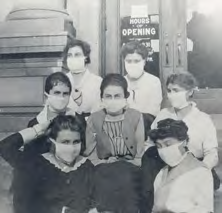 Libraries and Infectious Diseases
Libraries and Infectious Diseases
GÜSSÜN GÜNEŞ
Books became the victims of epidemics on suspicion of carrying disease in spite of lack of evidence and many of them were burned in the previous centuries. During 1918 pandemic libraries used fumigation as a disinfection measure, but today ultraviolet radiation is mostly used.
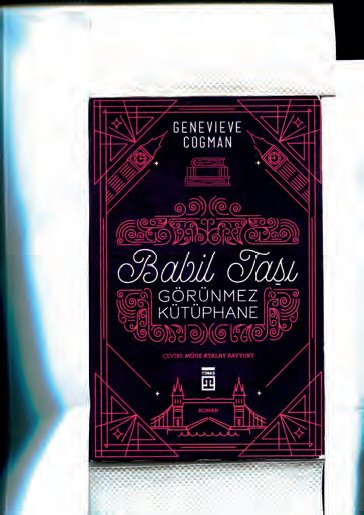 Libraries as scenes of novels
Libraries as scenes of novels
SALİHA KASAP
Libraries are living spaces for book lovers. They have a major share in the ontological space of “lifetime readers”. With this feature, libraries have also been the subject matter or the scene of various novels. There are novels which have a library as their main scene of events, others that use the library in part, and still others that set their stories in a bookshop.
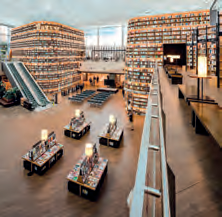 Libraries in shopping centers
Libraries in shopping centers
AYŞE KASAP In our time, the improvement of reading habits and the progress towards a knowledge society are generating discourses on “New Generation Libraries”, “The Library As A Third Place”, “Living Libraries”, and “Innovative Library Services” and leading to the opening of libraries within shopping centers. This contributes to raising people’s awareness of books and facilitates the latter’s accessibility.


